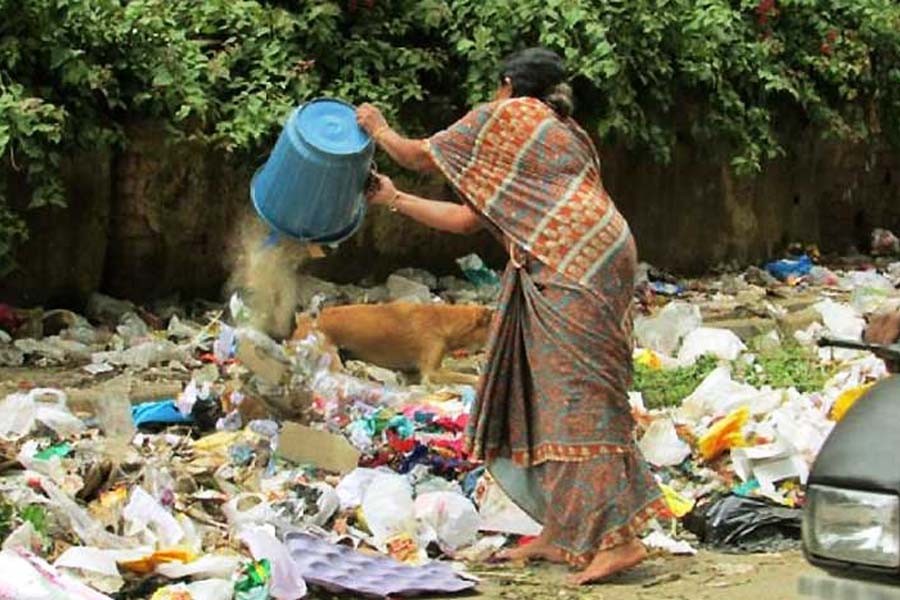
Published :
Updated :

Like in many civilised cities, littering is legally viewed as a crime in Dhaka --- and also in the country's other urban areas. Well, this virtual deterrent is in effect operative on paper only. In reality, the capital of Bangladesh is buried in myriad types of refuse --- from revolting municipal trash, organic leftovers to factory debris and junks. Apart from chockablock dumpsters at important roundabouts near markets, educational institutions etc, lately the city had some newer sites for dumping. All of these are, however, as per municipal rules, identified as places prohibited from being used as dumping places. To the chagrin of cleanliness- and environment-conscious people, the spots designated for dumping waste remain mostly unused. Majority of the city-dwellers are found shunning these places, one of the reasons being the spots' 'far-away locations'. To speak acerbically, littering has become a national trait in this country.
Over the last three decades, Dhaka has witnessed a few new sites for dumping trash. Those have never been thought of being used for such purposes. Of them, the one which emerges as the most noticeable in the list is the rivers near marketplaces and launch terminals. Take for instance the terminal at Sadarghat. Every day thousands of passengers walk along the low-height landing bridge connecting the station with the anchored launches. The frequently travelling passengers have become used to the spectacle which is found on both sides of the bridge. But newcomers might feel appalled to see the fetid stagnant water beneath. Stenches hang permanently in the whole terminal area. The colour of the water around is repugnantly thick-green. The water quality could be accepted as something characteristic of one found around an abandoned port.
What makes the river segment at Sadarghat launch terminal awful is the waste materials found floating there. Beginning with the shells of green coconut, plastic bottles of water and various juices, banana peels to hundred types of throw-ways, the wastes have long made the terminal one of the most polluted in the region. On occasions carcasses of cats and other small animals could be discovered remaining stuck in the hyacinth-filled water. There are strong reasons for a large section of sensitive passengers avoiding this terminal.
Ironically, few bother to look around the terminal. They go about their travels by launches or trawlers in the Buriganga River as a routine job. The fact that its water has long been declared unfit for survival of all kinds of aquatic creatures including plants means little to them. As part of a normal process, littering of the river water continues to occur throughout the country. Although the recent news of contamination of a number of major world rivers with the detritus of antibiotics sparked a huge outcry, the rivers in general are free of waste. Floating of empty water bottles, banana peels or packets of potato chips or snacks is an absurd sight in these rivers. But not in Bangladesh. While on pleasant steamer-travels along the wide and vibrant rivers like Shitalakkhya or Meghna, the views of tossing food containers and half-eaten fruit into water are nowadays common sights. The busy launch terminals in many other parts of the country offer a scenario similar to the one of Dhaka. The projectiles of empty cans of juice and cold drinks from speeding cars in broad daylight are a day-to-day view in Dhaka. This scenario and those of garbage piles in the middle of roads eventually emerge as a mockery of the slogan championed by the two city corporations: Do not litter. Spot fines for littering can be given a try. This option appears to have never been mulled.


 For all latest news, follow The Financial Express Google News channel.
For all latest news, follow The Financial Express Google News channel.